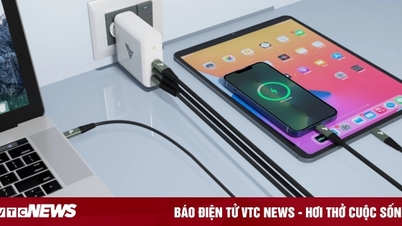Israel is preparing to perform the world's first human spinal cord transplant using a patient's own cells - a medical breakthrough that could help paralyzed people stand and walk again.
Tel Aviv University announced the news on August 20. The surgery, scheduled to take place in the coming months in Israel, marks a historic milestone in the field of regenerative medicine.
According to the World Health Organization (WHO), more than 15 million people worldwide are living with spinal cord injuries, most of which are caused by trauma such as falls, traffic accidents and violence.
Currently, there is no definitive treatment for spinal cord injuries. Medical measures focus on stabilizing the patient, preventing further damage and maximizing mobility.
Emergency treatment usually includes spinal immobilization, inflammation reduction, and sometimes surgery to repair fractures or relieve pressure on the spinal cord.
Subsequent recovery includes physical therapy, occupational therapy, and the use of assistive devices such as wheelchairs and braces.
Although experimental approaches—including stem cells and robotic devices—are being studied, none have yet reliably restored full spinal cord function.
Spinal cord injury is one of the few injuries that the human body cannot repair on its own. Spinal cord tissue is extremely complex and very sensitive.
“The spinal cord carries electrical signals from the brain to every part of the body,” explains Professor Tal Dvir, Director of the Sagol Center for Regenerative Biotechnology and the Nanotechnology Center at Tel Aviv University. “When it is severed due to an accident, a fall, or a combat injury, the signal chain is severed – like an electrical wire being cut in two. When the two ends are no longer connected, the signals cannot be transmitted, and the patient is paralyzed from the point of injury down.”
Unlike other tissues, nerve cells in the spinal cord cannot regenerate on their own. Over time, scar tissue forms and blocks remaining signals. The new procedure aims to replace the damaged cord with lab-grown spinal cord that can fuse with healthy tissue above and below the damaged area.
Animal studies (mice) have shown impressive results - mice were able to walk normally.
The initiative began about three years ago, when Professor Dvir's lab created personalized three-dimensional human spinal cord tissue in the lab.
Results published in the scientific journal Advanced Science showed that chronically paralyzed mice regained their mobility after being implanted with artificial bone marrow tissue.
The procedure begins by taking the patient's own blood cells, which are then reprogrammed into stem cell-like cells that have the ability to develop into any type of cell.
Fat tissue is also harvested to create a custom-made hydrogel scaffold. The stem cells develop into spinal cord structures within the scaffold, and are eventually implanted into the body to replace scarred tissue and reconnect the nervous system.
A few months ago, Professor Dvir's team received initial approval from the Israeli Ministry of Health for “compassionate use” trials with eight patients – making Israel the first country to test the method.
The technology was then commercialized through Matricelf, a company founded in 2019 under a licensing agreement with Ramot, Tel Aviv University's technology transfer company.
“If successful, this therapy could set a new treatment standard for spinal cord repair – a multi-billion dollar market that has not yet been effectively addressed,” said Matricelf CEO Gil Hakim. “We are proud that Israel is leading this global effort, and are committed to bringing this technology to patients around the world.”
“Our goal is to help paralyzed patients get out of their wheelchairs. Animal tests have shown extraordinary results, and we hope the results in humans will be equally promising,” Professor Dvir stressed.
Source: https://www.vietnamplus.vn/israel-prepared-for-the-first-synthetic-plant-on-the-gioi-with-te-bao-tu-than-post1056950.vnp






































































































Comment (0)